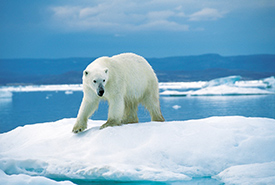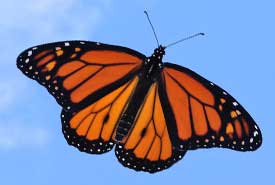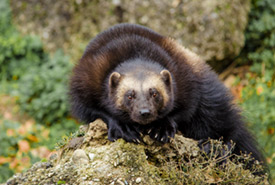Saving habitat for Canada's species at risk this holiday season

Polar bear (Photo by Ansgar Walk)
Halting the rapid loss of species is one of the greatest conservation challenges we all face. We’re currently witnessing what scientists have called the “sixth extinction.” From birds to bumble bees, many species are declining. There are now fewer species on Earth than just a generation ago. Past mass extinction events were caused by massive volcanic activity and asteroids hitting the Earth. Today, our global trust of living creatures is slipping away because of habitat loss and fragmentation, unsustainable use, climate change and invasive species.
Canada is home to approximately 80,000 species, but at least 16 species and subspecies are now extinct — gone forever from Canada, and from the planet. Some species you may have heard of, such as the passenger pigeon and great auk. The extinction story of others, such as the Rocky Mountain grasshopper, Macoun’s shining moss and deepwater cisco, are equally tragic, but not as well known.

Monarch (Photo by Steven Russell Smith)
Canadians often think about the species extinction crisis as something that’s happening elsewhere. The plight of elephants, tigers and gorillas is well known to many of us. We absolutely need to save these species, but stopping the global extinction crisis needs to start at home.

Wolverine (Photo from Pixabay)
One of the Nature Conservancy of Canada’s (NCC’s) most important roles is to protect habitat for species that are at risk of being lost from Canada. NCC now protects habitat for over 200 species that have been assessed as endangered, threatened or special concern by the Committee on the Status of Endangered Wildlife in Canada (COSEWIC).
Each year, NCC launches the Gift of Canadian Nature gift giving program to ensure natural spaces and the species they sustain are protected. A Gift of Canadian Nature — whether it’s sending an e-card or symbolically adopting a Canadian species or landscape — helps NCC ensure our country’s natural spaces are protected for today, tomorrow and for future generations. Some of the at-risk wildlife species that you can help protect and that are new to the Gifts of Canadian Nature program this year are:
Polar bear (special concern)
Not only are polar bears the biggest bear species, they’re also the world’s largest land carnivore. They’re affected by climate change; decreasing amounts of sea ice are significantly impacting their habitat.
Wolverine (special concern)
Rarely are these beasts seen, as they are solitary, shy animals with a big home range (50-400 km2 for males and 230-1,580 km2 for females). Wolverines face pressures from habitat fragmentation and disturbances from recreational activities.
Monarch (endangered)
The monarch was recently assessed as endangered by COSEWIC in Canada, due to its rapidly declining population. NCC has been restoring breeding, feeding and stopover habitats for monarchs across Canada.
To give the Gift of Canadian Nature this holiday season, visit giftsofnature.ca.


